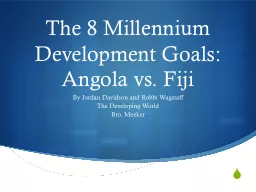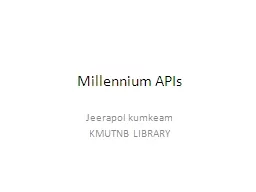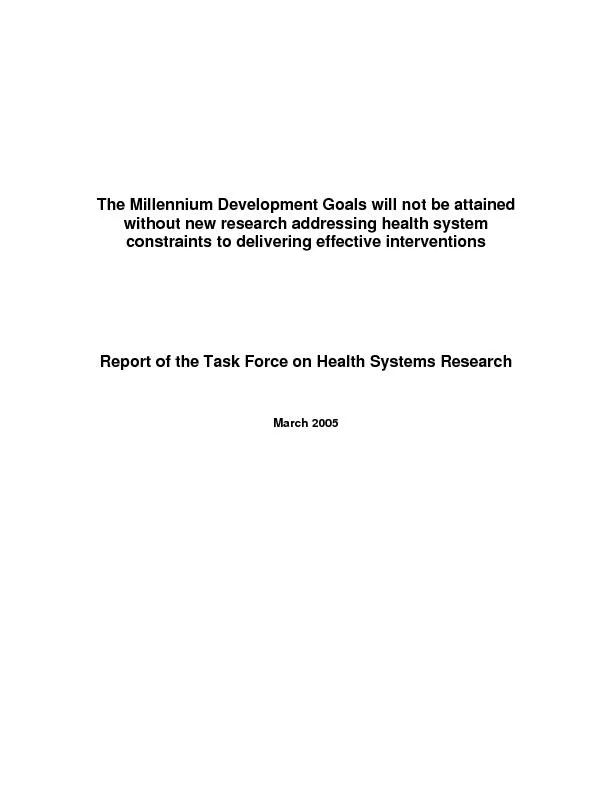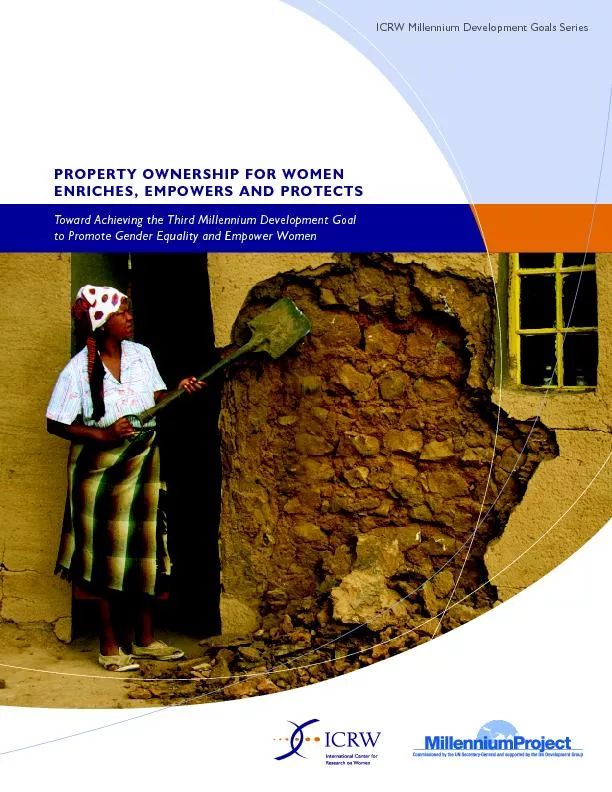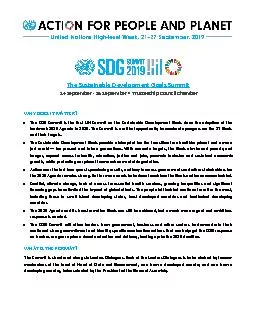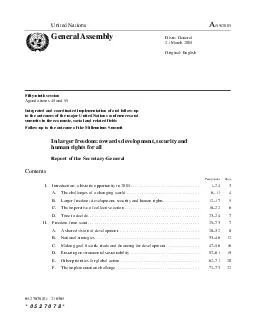PPT-The 8 Millennium Development Goals:
Author : debby-jeon | Published Date : 2015-11-29
Angola vs Fiji By Jordan Davidson and Robbi Wagstaff The Developing World Bro Meeker 11 Eradicate PovertyHunger Angola Angola currently has one of the highest
Presentation Embed Code
Download Presentation
Download Presentation The PPT/PDF document "The 8 Millennium Development Goals:" is the property of its rightful owner. Permission is granted to download and print the materials on this website for personal, non-commercial use only, and to display it on your personal computer provided you do not modify the materials and that you retain all copyright notices contained in the materials. By downloading content from our website, you accept the terms of this agreement.
The 8 Millennium Development Goals:: Transcript
Download Rules Of Document
"The 8 Millennium Development Goals:"The content belongs to its owner. You may download and print it for personal use, without modification, and keep all copyright notices. By downloading, you agree to these terms.
Related Documents

